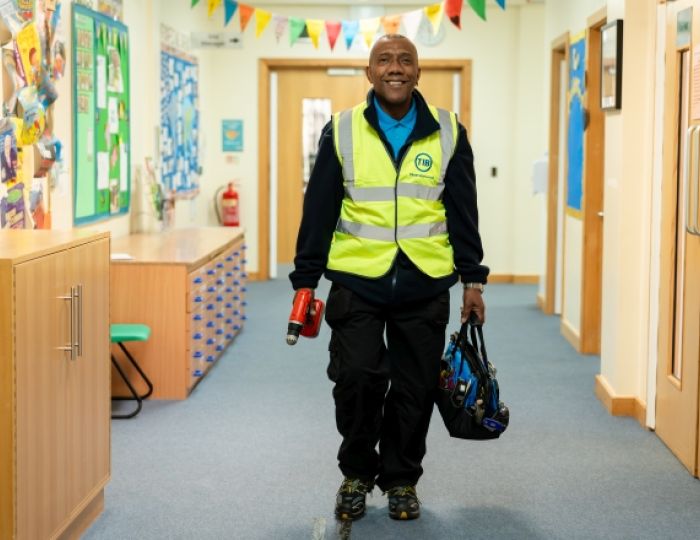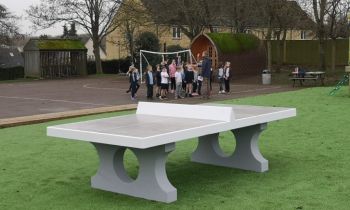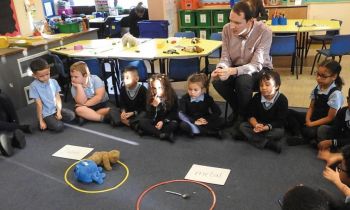How do we configure our classrooms so that they are effective incubators of children’s learning power? Take a look around. What is your environment like right now, as you read these words? Are you reading on a computer or tablet?
If so, does that make it easier to look things up – references to research, the meaning of unfamiliar words, and suchlike – as you go along? Does the internet challenge your concentration by making an alluring little noise when an email arrives?
Are there other distractions? Are you too hot or too cold? Are there books within reach? Are there other people around to talk to about ideas that spark your interest? Does your environment provoke thought and stimulate thinking? Or does it interfere with your learning?
Why design the learning environment?
Wherever we are, our physical environment impacts on our learning through the distractions and resources which it contains. And this is especially true of classrooms. Many features of the classroom affect the kinds of learning that the children will engage in, and the kinds of learning strengths and behaviours which they will draw on.
For example, some classroom layouts facilitate collaborative conversation, while others inhibit it. Some classrooms have displays and anchor charts that act as reminders to the children to continuously work on and strengthen themselves as learners. Some invite imagination and concentration. Some invite silent reading or encourage competition. Some encourage the children to be resourceful and independent, while others encourage dependency and helplessness.
When teachers realise that they are inevitably in the ‘cultivating attitudes’ business, they have to pay attention to every element of the classroom that carries messages about learning, and about the kinds of learners that the children are expected to be. How can the classroom itself encourage learners to be resilient, to have good learning conversations, to be methodical and resourceful, or to be more reflective and self-aware?
Before we get into the how, let’s take a moment to talk about the why. There are a number of good reasons why purposefully designing the learning environment is a good idea. The early childhood teachers behind the famous Reggio Emilia approach describe the learning environment as the ‘third teacher’ – the other two being the actual teacher and the relationships and interactions between the children.
If this is true, then obviously we want to configure the environment to make the third teacher as effective as possible. Furniture can be arranged purposefully to foster the kind of learning you want, and to develop the learning muscles which you are targeting.
For example, you can think about how to arrange the tables for group learning, paired learning, individual learning, or a mix of all three. When children understand how to use resources to support their learning, and those resources are readily available, they gain independence and ownership over their learning, and thus build resourcefulness and initiative.
What the environment can do
Now to the how. Think about the layout and use of the furniture. Take a moment to reflect on how your classroom is presently laid out. Think about what kinds of learning behaviours are made easier or more difficult by this layout. What implicit messages does the classroom send to the children about how responsible and independent you want them to be?
Are the tables in rows facing the front, or are children in groups around tables? What effect do you think this has on the learning in your classroom? Who decides who sits where? Do the seating arrangements change, or do the children always sit in the same place? What are the pros and cons of you deciding, or of the children having a say? Do you rearrange the furniture in order to facilitate different kinds of learning?
Do you tend to group children according to ability? Do you try to disguise this by inventing what you think are neutral names for the groups – for example, ‘the Yellow Table’, ‘the Elephants’, and so on? Do you think the children see through this? What effect do you think it has on the children’s attitudes to learning if they know they are in the top, bottom, or middle group? Do you have your own desk? Do you tend to hide behind it when you are anxious? What message do you think this sends to the children?
When you have considered these questions, think about what might happen if you changed things around and do a ‘plus, minus, interesting’ on each idea. This is a thinking routine, originally developed by Edward de Bono, which asks you to separate out the pluses, the positive effects, and the minuses – the risks or disadvantages – and consider any interesting questions that arise.
Once you have reflected, why not try out some new ideas? See what happens when you put all the chairs in a big circle, or put the chairs to one side so children have to stand, sit on the floor, or lie down. What happens when you move your own desk, say from the front to the back of the room – or get rid of it completely? Could you create a classroom layout that is easily adaptable to individual learning, group learning, and paired learning without causing too much of a fuss?
Provision of resources
In order to be resourceful learners, children need to a) understand what resources can help them learn at any given time, and b) be able to easily access those resources. Is your classroom currently enabling the children to do this? If not, how can you encourage them to be more resourceful by gradually increasing the demand that they select and collect their own resources?
Alongside making resources more accessible to the children, you could create ‘unstuck’ posters as a class by discussing different ways in which they could solve problems in their learning without having to rely on an adult. Inspirational quotes can emphasise the learning habits you are aiming to develop and create opportunities for you to structure class discussions about them. There are lots of quotations on the Internet, attributed to various famous people, that emphasise the necessity and importance of making mistakes if you are trying to achieve anything novel or worthwhile. For example:
“Ever tried. Ever failed. No matter. Try again. Fail again. Fail better.”
– Samuel Beckett
“I look on losing not as failure but as research.”
– Billie Jean King
“I have not failed. I’ve just found 10,000 ways that won’t work.”
– Thomas Edison
See if the children can find new ones to display, or ask them to make up good quotes about the power of failure.
Another way to make mistakes sound positive rather than negative is to create a display which celebrates the most interesting or intelligent mistake made that week – by a child or an adult. The one in Becky’s classroom is titled “Mistake of the Week”.
See if you can talk the children into volunteering their own mistakes for consideration, or ask them to nominate each other. Make this the most exciting display in your classroom by talking about it regularly and building anticipation with the children by saying things like, “I wonder who will make it onto the ‘Mistake of the Week’ wall this week?”
The learning power approach
The learning power approach is a way of teaching for teachers who value politeness and success, but who also value other outcomes even more. They want to see children do as well as they can on the tests, to learn to read and write and do their maths, but – more than that – they also want them to grow in their independence, resourcefulness, creativity, curiosity and capacity for thinking about and exploring important matters deeply – for themselves.
Professor Guy Claxton is a cognitive scientist specialising in the expandability of human intelligence.
Becky Carlzon is a primary teacher and Learning Power Approach practitioner with international teaching experience spanning 12 years.
The article is an edited extract from the book Powering Up Children, which is available now, published by Crown House Publishing.










